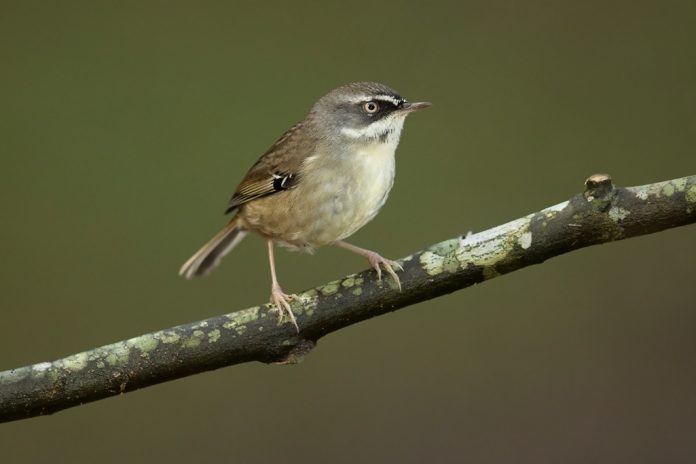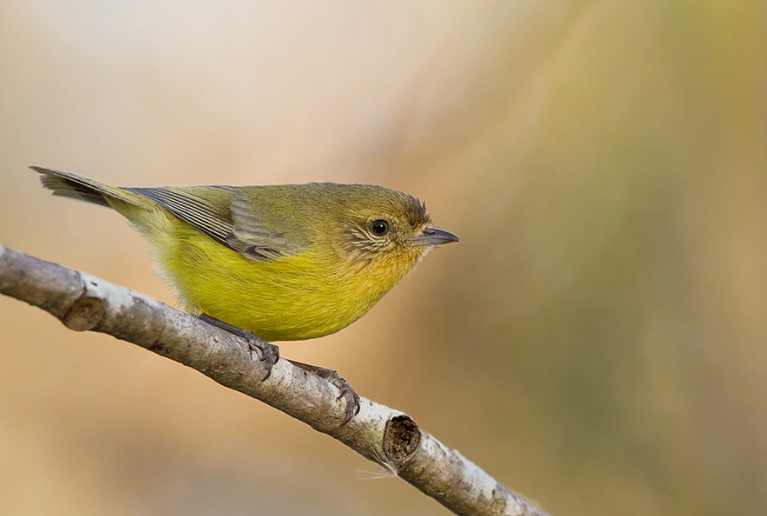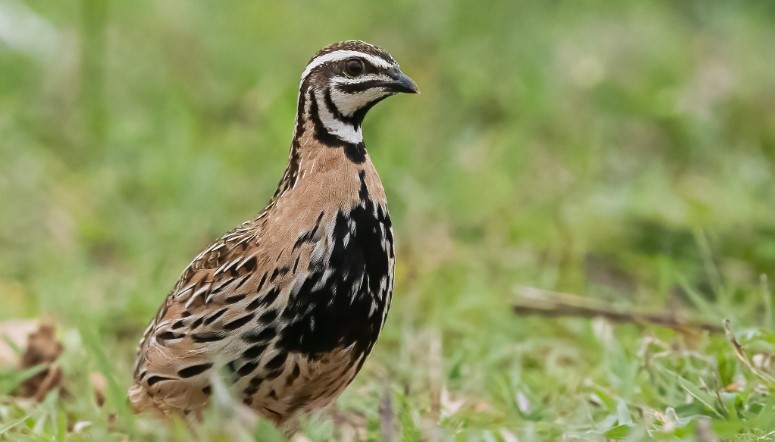Description: The large-billed scrubwren (Sericornis magnirostra) lives in dense temperate subtropical or tropical moist lowland rainforests, like other plain brown scrubwrens. It is the most widespread in Australia, ranging down the entire east coast as far as the Dandenong-Donna Buang Ranges, Victoria.
In northeastern Queensland, it is ubiquitous, from the tableland rainforests to the tropical lowlands. Southwards, it becomes increasingly confined to pockets of subtropical rainforest, often along gullies, before petering out in Victoria. This is a passerine bird in the family Acanthizidae.
Habitat: Although sedentary and probably territorial when breeding, the scrubwrens commonly band together in small, loose feeding parties of five to ten birds. They move through the lower and middle branches of the forest, chattering constantly.
The large-billed scrubwren feeds most frequently in the canopies of each layer. However, they rarely descend into the lower shrub layer and almost never to the ground throughout their range.
They feed at heights between about three and 17 meters. Birds frequently begin low down and work upwards through the foliage, hanging vines, or along branches, sometimes suspended upside down while they glean insects off the substrate.
The crowns of the plants are frequently approached from the inside outward rather than the reverse. The scrub wrens rarely flutter at the foliage, as does the brown gerygone with which they share their feeding zone.
Food: As they flit rapidly about, they gather their food—insects and small snails—from leaves, twigs, spiders, ants, wasps, bark, dangling vines, beetles, liana tangles, or lawyer cane. Occasionally, they stop to search more closely for prey.
In the tropics, they are conspicuous in the foraging flocks of mixed species, which include Spectacled Monarchs and Little Shrike-thrushes. Each species in such a flock probably catches more insects than it would catch alone because the fluttering of more birds disturbs more insects.

Identification: Adults: Both sexes are similar. The upper parts are brown-olive, becoming darker and browner on the head and warmer brown on the rump; the tail is plain brown with brighter edges. The forehead vaguely scalloped with buff; wing quills edged pale green-buff; and the primary coverts dusky-edged pale buff Face pale brown with a faint rufous-buff wash of varying intensity around face and throat.
Underparts are greenish buff with a vaguely yellow wash, with more olive on the flanks. The eyes are red. Bill is a black, slightly upturned foot shade of pink horn. Moreover, immature birds are generally paler, with a heavier rufous or warm brown wash on the face and underparts. Eye brown with a smaller bill.
Voice, Call, Song, Sound: The large-billed scrubwren call is a harsh chattering s-chew s-cheer repeated rapidly in contact and alarm, softer than churrs made by other east coast scrubwren’s. However, the Large-billed Scrubwren song is a soft-tinkling twitter sip-sip-sip.
Nesting: Large-billed Scrubwren breeds from July–January, sometimes June–February. The nest is an oval dome, with a side entrance of 25 mm diameter; of plant stems, fiber, rootlets, leaf skeletons, and moss; lined with fiber and feathers; placed in forks, vines, and tree crevices, from close to ground to 10 m high. Sometimes the old nest of the yellow-throated scrubwren is used.
In southern Queensland and New South Wales, however, where their nests have rarely been found, they occupy those of yellow-throated scrubwrens or even brown gerygones. These nests are often old and disused, but large-billed Scrubwrens usurp freshly built nests, depositing new lining over abandoned or infertile eggs of the earlier users. Group members sometimes help to feed the young.
Eggs: The clutch contains three to four lustrous, off-white to pale purple-brown, minutely speckled dark brown eggs. Forming zone at the larger end; oblong-oval, about 19 x 14 mm. In the lowlands of northern Queensland, where no other scrubwrens occur, large-billed eagles construct their own small nests.
Distribution: East coast and nearby ranges of the mainland, from Cooktown-Helenvale, Queensland, Kinglake to Dandenong-Donna Buang Ranges, near Melbourne. In rainforests and dense gullies in wetter eucalypt forests.
Races: There are two races: one Cooktown-Ingham, Qld; the other Clark Range, Qld, and south. A round of Cooktown apparently intergrades with Tropical Scrubwren, the forms of which may be treated as races of the large-billed.
Size: The average bird size is 11 to 13 cm and weighs around 10 g.
Similar Species: The Atherton Scrubwren (Sericornis keri), is alike; however, it is a bit slimmer and smaller with short legs. Atherton Scrubwren tends to feed on the ground or a few meters above.







